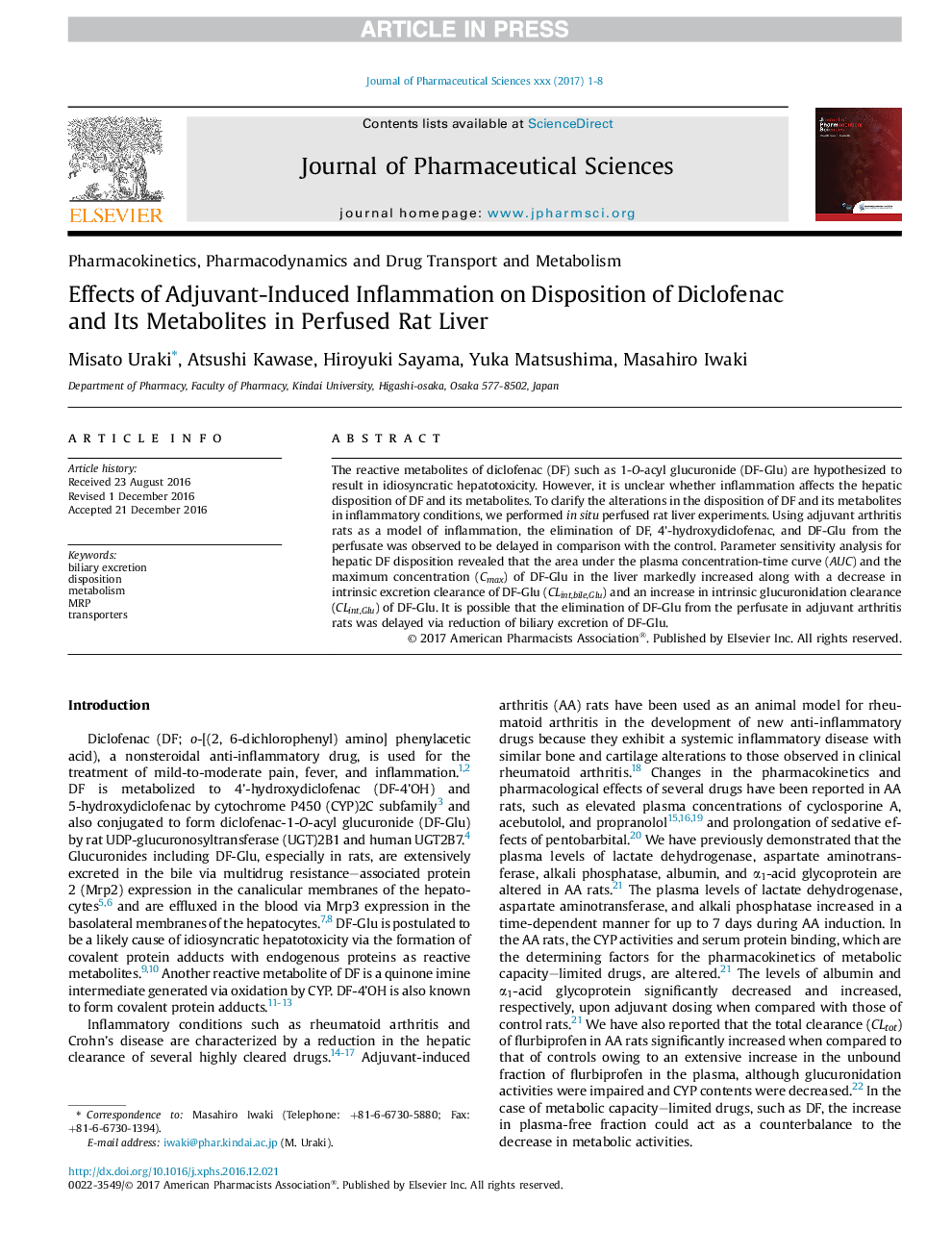| Article ID | Journal | Published Year | Pages | File Type |
|---|---|---|---|---|
| 8514366 | Journal of Pharmaceutical Sciences | 2017 | 8 Pages |
Abstract
The reactive metabolites of diclofenac (DF) such as 1-O-acyl glucuronide (DF-Glu) are hypothesized to result in idiosyncratic hepatotoxicity. However, it is unclear whether inflammation affects the hepatic disposition of DF and its metabolites. To clarify the alterations in the disposition of DF and its metabolites in inflammatory conditions, we performed in situ perfused rat liver experiments. Using adjuvant arthritis rats as a model of inflammation, the elimination of DF, 4'-hydroxydiclofenac, and DF-Glu from the perfusate was observed to be delayed in comparison with the control. Parameter sensitivity analysis for hepatic DF disposition revealed that the area under the plasma concentration-time curve (AUC) and the maximum concentration (Cmax) of DF-Glu in the liver markedly increased along with a decrease in intrinsic excretion clearance of DF-Glu (CLint,bile,Glu) and an increase in intrinsic glucuronidation clearance (CLint,Glu) of DF-Glu. It is possible that the elimination of DF-Glu from the perfusate in adjuvant arthritis rats was delayed via reduction of biliary excretion of DF-Glu.
Related Topics
Health Sciences
Pharmacology, Toxicology and Pharmaceutical Science
Drug Discovery
Authors
Misato Uraki, Atsushi Kawase, Hiroyuki Sayama, Yuka Matsushima, Masahiro Iwaki,
